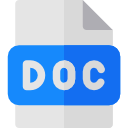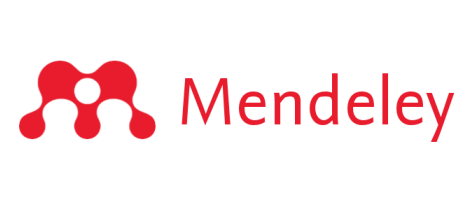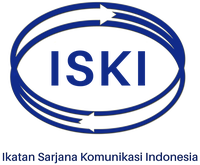MODEL MANAJEMEN KOMUNIKASI DAN ADMINISTRASI BACK OFFICE E-GOVERNMENT SEBAGAI MEDIA PELAYANAN PUBLIK
DOI:
https://doi.org/10.31315/jik.v7i1.4Keywords:
management back office, e-government local governmentAbstract
On the challenges of development for democratization and transparency in the frame- work of regional autonomy, local governments now compete to build a race-e-government infrastructure. In factual, the main obstacles of the implementation of e-government is on the governance or management structure of the management and quantity and quality of human resources at government agencies that are very limited. The object of the selected study site is The City of Yogyakarta and The Sleman regency government. The formulation of the problem is taken “How E-Government Communication and Adminitrations Management Back Office Models as a Public Service Studies on the regional government of Yogyakarta and Sleman District Government Sites? “ Research method used was descriptive research to guide the inductive eksploratory to the results of research that the technical provisions of the respective websites of local governments to become the object of research in managing the front office has to follow some standard that is required in the development of the web as a medium for communication and information. Information uptodating, especially news on the navigation was done routinely. But still there is a delay of uptodating websites is a sign that there is imbalance between the management of websites each local government. Number of links the information of each local government websites have been sufficient, meaning that many categories of information provided. The fundamental problem lies in the fact that the government does not provide e-mail links for the user community, if there is acceptance of the feedback is to the manager or administrator websites and not on the officials concerned.
References
Anonim, 2001, Program Pembangunan Daerah Propinsi Daerah IstimewaYogyakarta, Badan Perencanaan Daerah Propinsi Daerah Istimewa Yogyakarta,Yogyakarta.
Ancok, Djamaludin, 2000, Dampak Teknologi Internet Pada kehidupan Manusia dan Pengelolaan Institusi Pendidikan, makalah pada peringatan Lustrum ke tujuh Fakultas Psikologi Universitas Gadjah Mada Yogyakarta, 15 januari 2000.
Arifin, E Zaenal, 1998, Dasar-dasar Penulisan Karangan Ilmiah, Grasindo, Jakarta.
De Fleur, Melvin L, Sandra Ball Rokeach, 1980, Theories of Mass Communicatons, Longman Inc, New York.
Dizard, Wilson, Old Media New Media, 1994, Longman Inc, New York.
Indrajit, Richardus E., 2002, Electronic Govern- ment, Penerbit Andi, Yogyakarta. Infante,
Dominic A, 1990, Building Communication Theory, Waveland Press, Illinois. KOMINFO, 2002 (Oktober), Sistem Informasi Nasional. Kementrian Komunikasi danInformasi. Tersedia di http:// www.kominfo.go.id/Dokumentasi.asp?cid=43 [12Februari 2003].
Mc Quail Denis, 1987, Teori Komunikasi massa, Penerbit Erlangga, Jakarta.
Mulyana, Deddy, 2003. Ilmu Komunikasi Suatu Pengantar, Rosda Karya, Bandung. Moleong,
Lexy J, 1989, Metode Penelitian Kualitatif, Remadja Karya, Bandung.
Nasution, 1992, Metode Penelitian Naturalistik Kualitatif, Tarsito, Bandung.
Nasution, Zulkarmain, 1989, Teknologi Komunikasi Dalam Prespektif Latar Belakang dan Perkembangannya, Lembaga Penerbitan Fakultas Ekonomi Universitas Indonesia, Jakarta
Rakhmat, Jalaludin, 1997, Metodologi Penelitian Komunikasi, CV Rosda Karya, Bandung
Rogers, Everett M, 2006, Communications Technologie, The Free Press Collier Mc Millan Publishing, London
Singarimbun, Masri, Sofian Effendi, 1998, Metode Penelitian Survei, LP3ES, Jakarta
Sosiawan, EdwiArief, 2003, Teori Komunikasi Virtual, Jurnal Ilmu Komunikasi, UPNVY
Sosiawan, Edwi Arief, 2001, Kajian Internet Sebagai Media Komunikasi, Tesis, PPS UNPAD, Bandung
Suryadi MT, 2002, TCP/IP dan Internet, Elex Media Computindo, Jakarta
Wimmer, Roger D, Dominick, Joseph, 2003, Mass Communication Research, Wadsworth Publishing, California, USA
Computer Mediated Communication Magazine / Volume 2, Number 3 / March 1, 2003 / Page 2 tanggal 19 Oktober 2007
Sumber lain :
http://www.awangfaroek.com/awangf01/index.php?option=com_content&task=view&id=58&Itemid=52 tanggal 30 Maret 2008
http://wartaegov.com/go-id-tes tanggal 2 April 2008
http:// www. jogja.go.id tanggal 2 April 2009
http:// www. sleman.go.id tanggal 2 April 2009
Downloads
Published
Issue
Section
License
Authors who publish articles in this journal agree to the following terms:
- Copyright remains with the author and gives rights to the Jurnal Ilmu Komunikasi as the priority to publish the article with an Creative Commons Atribusi 4.0 Internasional License, which allows the article to be shared with acknowledgment of the author of the article and this journal as the place of publication.
- Authors can distribute the publication of their articles on a non-exclusive basis (for example: on university repositories or books) with notification or acknowledgment of publication in the journal Option
- Authors are allowed to post their work online (for example: on personal websites or in university repositories) before and after the submission process (see The Effect of Open Access)
Jurnal Ilmu Komunikasi is licensed under a Creative Commons Atribusi 4.0 Internasional License.









